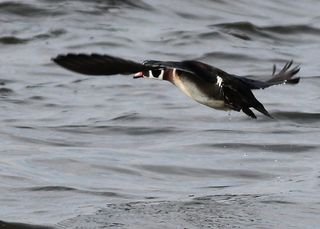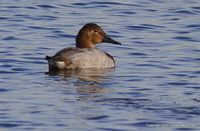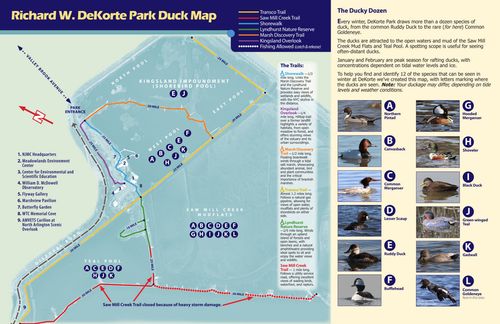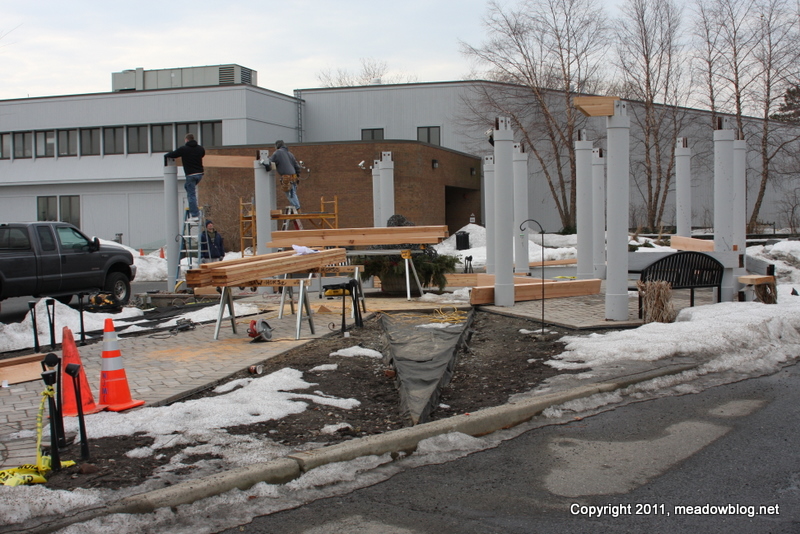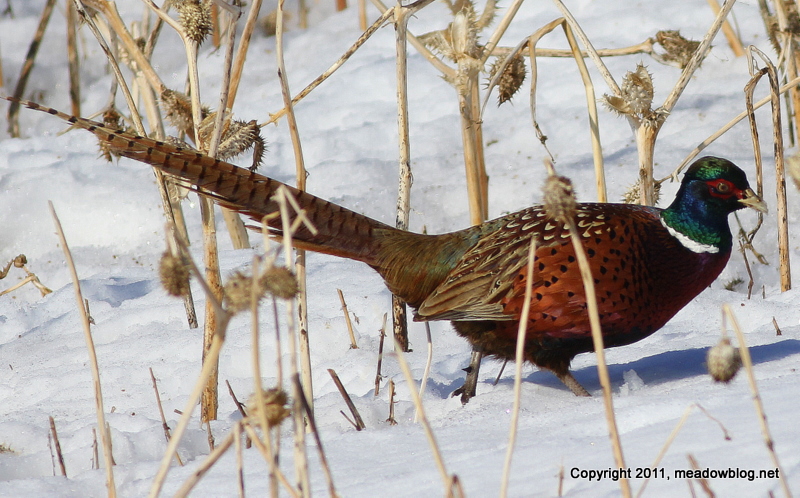
The NJMC's Jim Wright, who keeps this blog, also writes a nature column for The South Bergenite. His latest is on Ring-necked Pheasants and other winter birds. You can read it here:
It may be mid-winter, but the New Jersey Meadowlands Commission’s DeKorte Park and environs are buzzing with unusual birds.
Not only are the Canvasback Ducks, the Rough-Legged hawks and the White-crowned Sparrows — our visitors from Canada – still hanging around, but we also have been treated to great looks at a bird that has become increasingly rare just about everywhere else in the state.
The bird is the Ring-necked Pheasant, and its size and wonderful plumage make it like no other bird around.
The great thing is, you can see all four of these birds within a few hundreds yards of each other – albeit with a little luck.
The pheasants, the Rough-legged Hawks and the White-crowned Sparrows have been regularly along Disposal Road by the AmVets Carillon. The canvasbacks have been rafting by the dozen in the Saw Mill Creek Tidal Impoundment in nearby DeKorte Park.
“The Meadowlands are the perfect place for ring-necked pheasants for three reasons — food, cover and water,” says NJMC naturalist Mike Newhouse. “Our closed landfills provide all three requirements.”
The landfills, Newhouse explains, are covered with mugwort, which produces plenty of seeds each fall. Also, phragmites provides protection from predators. And pheasants also like to be near wetlands – which they are abundant here.
The Rough-legged hawks are beautiful cousins of our common Red-tailed Hawk. They flew down from Canada after food supplies got scarce, and have been seen hunting over our closed landfills ever since.
That’s great news, since these hawks visit our region sporadically. Last year, for example, only one was seen — and then only for a couple of days. This year as many as five Rough-legs have been spotted.
Although these large hawks come in two plumages, light morph and dark morph, this year we have had primarily light-morph rough-legs.
The Canvasbacks and White-crowned Sparrow are dependable winter visitors. The only questions each year are when they’ll arrive and how long they’ll stay. We typically see them just about every day from mid-December and then, before we know it, they’re gone.
The adult White-crowned Sparrows are easy to spot because of the three white stripes on top of their heads. The juveniles are harder to identify. Aside from their pinkish bills, they are a one-way ticket to Drabville.
The Canvasbacks are easy to find in the Saw Mill Creek Tidal Impoundment because they are large ducks with reddish brown heads, black chests and light bodies, and they tend to raft in large groups.
“The canvasbacks and other waterfowl should still be plentiful as long as the water doesn’t freeze,” says Newhouse.
 We had two reports of a Bald Eagle by DeKorte this morning, out toward the Turnpike.
We had two reports of a Bald Eagle by DeKorte this morning, out toward the Turnpike.
